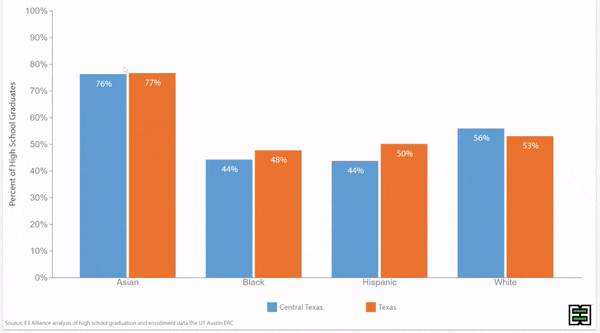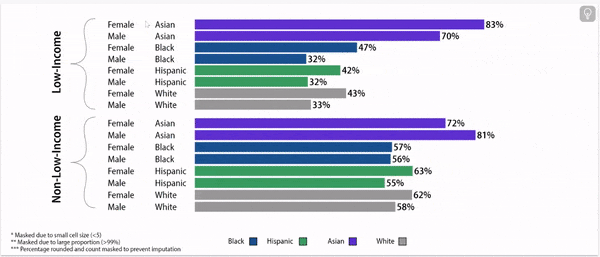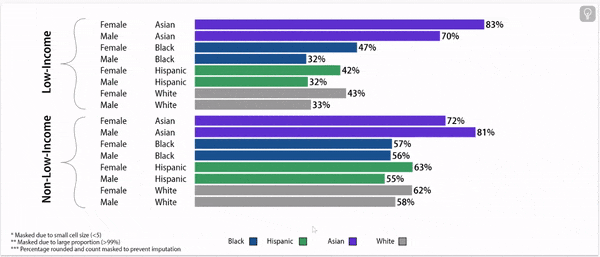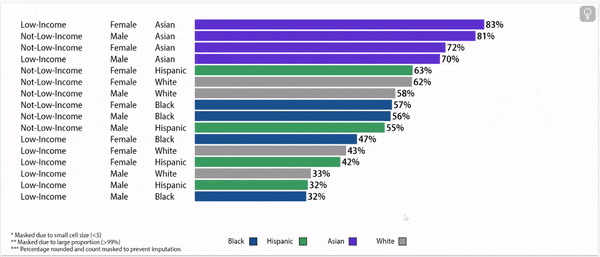School To Work | Endorsements Profile
Students earn an endorsement by completing the curriculum requirements, including a fourth credit of math and science and two additional elective credits.
If only one endorsement is offered by a district or charter school, the endorsement must be for multi-disciplinary studies.
This data takes a closer look at endorsement area and connects endorsement pathways to postsecondary and workforce opportunities.
Jump to: Source and cohort information about this data.
Popularity of Endorsements by Endorsement Type
Note: if only one endorsement is offered by a district or charter school, the endorsement must be for multi-disciplinary studies.
Digging Deeper: Gender, Income, and Race Play a Role in Endorsements Received
High School Graduates Receiving No Endorsement, Class of 2022
About this data:
E3 Alliance relies primarily on data from the University of Texas Education Research Center (ERC). This data allows for a year-by-year understanding of the school to workforce pipeline based on where and when a student graduates from high school. Secondary data pertains to high school graduates from within the state of Texas, and postsecondary enrollment data pertains to those who enroll in Texas postsecondary institutions.
Following are items to note:
The data represents the year the students graduated from high school. Measuring postsecondary enrollment requires one year to elapse from graduation to allow students time to enroll. There is also a delay in data availability due to state approval within the ERC and analysis time. Therefore, the graphs below present data for the graduating class of 2020.
Cohort: First-time 9th grade students who graduate within four years, including students who transfer in
Outcomes that reference data from 2021, 2022, or 2023 do not include San Marcos CISD, due to a data discrepancy.




